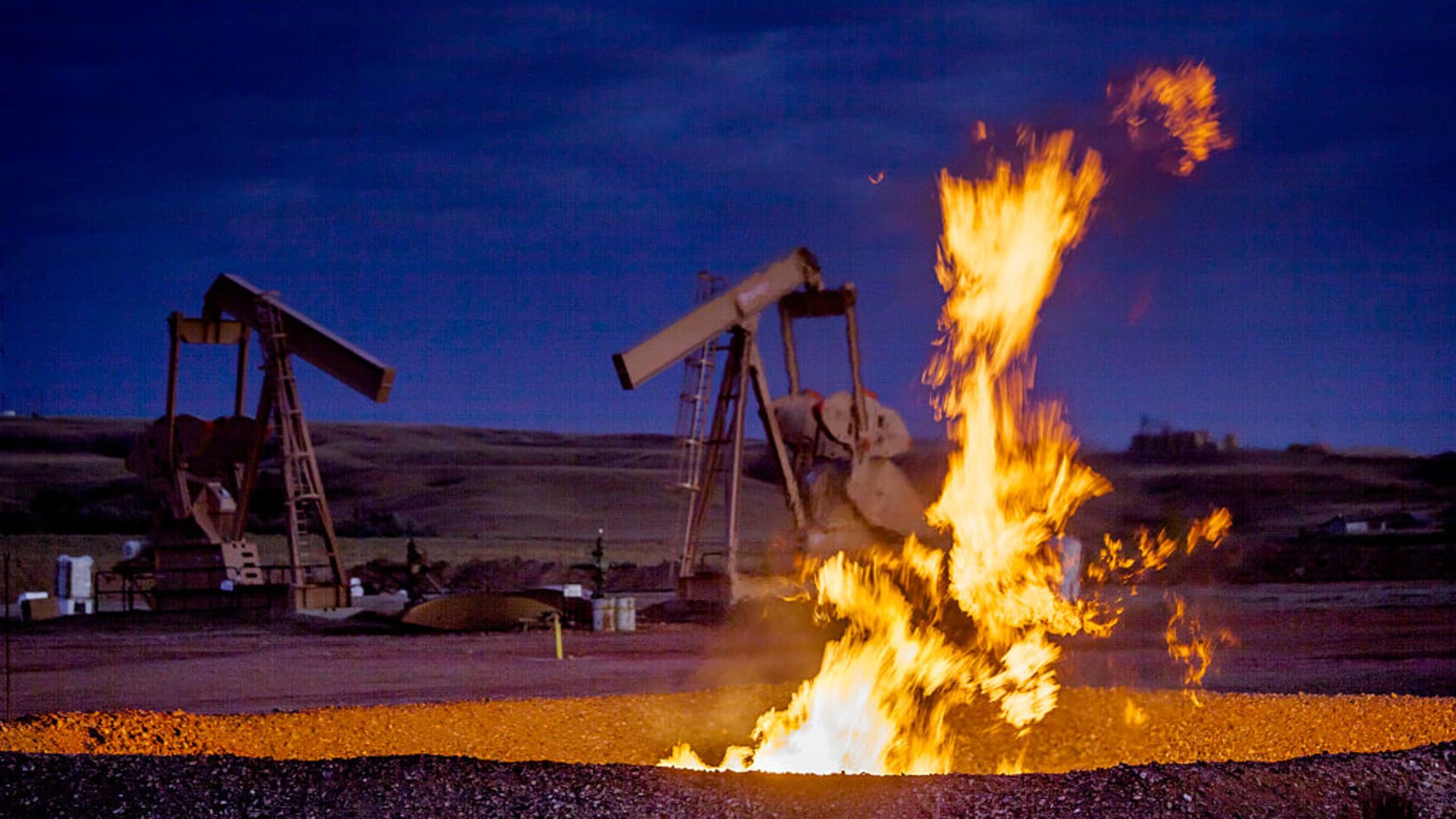Flames from a flaring pit close to a properly within the Bakken Oil Field. The major part of pure gas is methane, which is odorless when it comes instantly out of the gas properly. In addition to methane, pure gas sometimes incorporates different hydrocarbons similar to ethane, propane, butane, and pentanes.
Orjan F. Ellingvag | Corbis News | Getty Images
The intensity of methane and greenhouse gas emissions from the oil and gas sector declined 28% and 30%, respectively, between 2019 and 2021 among the many largest producers within the nation, regardless of a rise in pure gas manufacturing, according to an analysis revealed by the nonprofits Clean Air Task Force and Ceres.
The report, which assessed the production-based emissions of greater than 300 U.S. producers, discovered that the methane emissions intensity of pure gas manufacturing and the greenhouse gas emissions intensity of oil and gas manufacturing differ dramatically throughout firms.
Natural gas producers within the highest quartile of methane emissions intensity have a median emissions intensity that is almost 26 instances larger than producers within the lowest quartile, the study discovered. And oil and gas producers within the highest quartile of greenhouse gas emissions intensity have a median emissions intensity that’s greater than 13 instances larger than producers within the lowest quartile.
“Oil and gas producers will not be equals relating to methane emissions, and this analysis makes clear that an organization’s local weather affect is a direct end result of operational and funding choices inside its management,” Andrew Logan, senior director of oil and gas at Ceres, mentioned in a press release.
Greenhouse gas emissions from the U.S. oil and gas sector come primarily from the extraction and manufacturing course of, the place methane and different planet-warming gases are launched by means of venting, flaring and leaks.
The decline in reported methane emissions between 2019 and 2021 was pushed by a discount of reported emissions from pneumatic controllers, whereas related gas venting and flaring had been accountable for the biggest lower in reported carbon dioxide emissions, the report mentioned.
Pneumatic controllers, gadgets that use compressed air to manage pressures or temperature within the manufacturing course of, had been the biggest supply of whole reported methane emissions, making up 67% of emissions, the study discovered.
Methane is about 84 instances stronger than carbon dioxide relating to warming the environment, however would not final as lengthy within the environment earlier than it breaks down. Scientists have warned that methane emissions must be dramatically reduced to keep away from the worst impacts of local weather change.
The study was designed to supply an evaluation of greenhouse gas emission knowledge that firms are disclosing to the U.S. Environmental Protection Agency.
The authors famous that the traits in emissions will not be constant throughout basins or particular person firms and can fluctuate yr to yr. They additionally mentioned the report would not account for unreported emissions that come from main leaks and emissions from smaller producers.
Lesley Feldman, analysis and evaluation supervisor on the Clean Air Task Force, mentioned the findings underscore the necessity for sturdy federal and state laws that may standardize greatest practices throughout the trade.
Methane emissions alone are accountable for roughly half a level Celsius of international warming up to now, and methane ranges within the environment proceed to rise yearly, in accordance with the Intergovernmental Panel on Climate Change.

